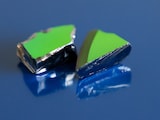One of the most dreaded emergencies parents can face is choking. With babies and toddlers, it typically occurs suddenly and silently when a baby sticks an object in their mouth to explore. Their airways are tiny that even small objects, such as beads, toy parts or food the size of a grape or almond can turn into fatal obstructions in seconds. When this does happen, clearing the airways immediately by taking action is critical. This is even more important because most parents in India aren't taught the Heimlich manoeuvre or even CPR as a compulsory part of their prenatal or postnatal training. Let's change that.
How Choking Happens
Babies explore the world intensely with their mouths. From 6 to 12 months, they tend to grab and mouth almost anything within reach. If a small object slides too far back, it can block the airway partially or completely. A partial blockage might lead to coughing or gagging, noisy breathing; complete obstruction can mean an inability to cry or breathe with the face turning blue and requiring immediate emergency help.
Recognizing The Signs Of Choking
Signs and symptoms parents and caregivers may notice:
- A sudden loss of the ability to breathe or cry
- Weak or silent coughing
- High-pitched or absent breath sounds
- Panic or flailing movements
- Change in colour of the skin (bluish lips or face)
If the baby stops responding, CPR and emergency medical attention are also necessary.
The Heimlich Manoeuvre For Infants
For infants less than 1 year, the Heimlich manoeuvre is modified as back blows and chest thrusts. Here's what to do if there is a baby who is choking and can't breathe or cough:
- Place the baby on his or her stomach across your forearm with head and neck supported.
- Give five firm back blows - hit directly between their shoulder blades with the heel of your hand.
- If the object doesn't come out, turn the baby onto his or her back as you hold the head.
- Perform five rapid chest thrusts with two fingers in the middle of the breastbone, below the nipple line.
- Continue to move back and forth between the back blows and chest thrusts until the object is dislodged or baby becomes unresponsive.
- Begin CPR and call 102 (ambulance) immediately if the baby stops breathing.
What Doctors Do In The Emergency Room
When a child is rushed to the hospital choking, doctors follow life-saving protocol such as the Paediatric Advanced Life Support (PALS) algorithm. Depending on the severity, they might also try manoeuvres like back blows or chest thrusts for an infant. If the object fails to dislodge, more invasive techniques such as using forceps to extract it or even making a temporary airway (needle cricothyrotomy) may be necessary.
When the object is out, doctors evaluate the mouth and throat for damage. ENT surgeons can stitch any lacerations found under anaesthesia. The patient is admitted for close observation in the Paediatric ICU further.
A Real-Life Case From Bengaluru
A few days ago, an 8-month-old baby girl was rushed to Manipal Hospital, Varthur Road, Bengaluru after choking on a small plastic toy ice-cream cone. The toy had become firmly lodged in her soft palate, blocking her airway and putting her in severe distress.
Under the guidance of Dr. Vignesh N, Consultant and Clinical Lead, Department of Emergency Medicine, the ER team immediately began advanced resuscitation procedures. After several tense minutes and multiple careful attempts, they successfully removed the toy-just in time to save her life.
The baby was then treated by Dr. Saranya Sasikumar, Associate Consultant, ENT, for deep throat lacerations. The surgery went smoothly without complications, and the baby recovered well afterward. She was closely monitored in the Paediatric Intensive Care Unit (PICU) under the supervision of Dr. Saurodip Maity, Consultant, PICU. Coordinated efforts of the medical team, the infant made a full recovery and was discharged within two days, safe and smiling in her parents' arms.
Preventing Choking At Home
Legit prevention is far better than a fight of the decades. Here is how parents can reduce the risk:
- Do not let them to play with small toys, buttons, beads and coins.
- Don't give grapes, nuts or popcorn to children under 3.
- Always supervise mealtime and playtime.
- Take a basic first-aid and infant CPR course, it can make the difference between life and loss.
Choking can occur in a flash, but knowing what to do and acting without delay can turn catastrophe into relief. Awareness, prompt action, and skilled emergency care truly give children a second chance at life.
Disclaimer: This content including advice provides generic information only. It is in no way a substitute for a qualified medical opinion. Always consult a specialist or your own doctor for more information. NDTV does not claim responsibility for this information.















